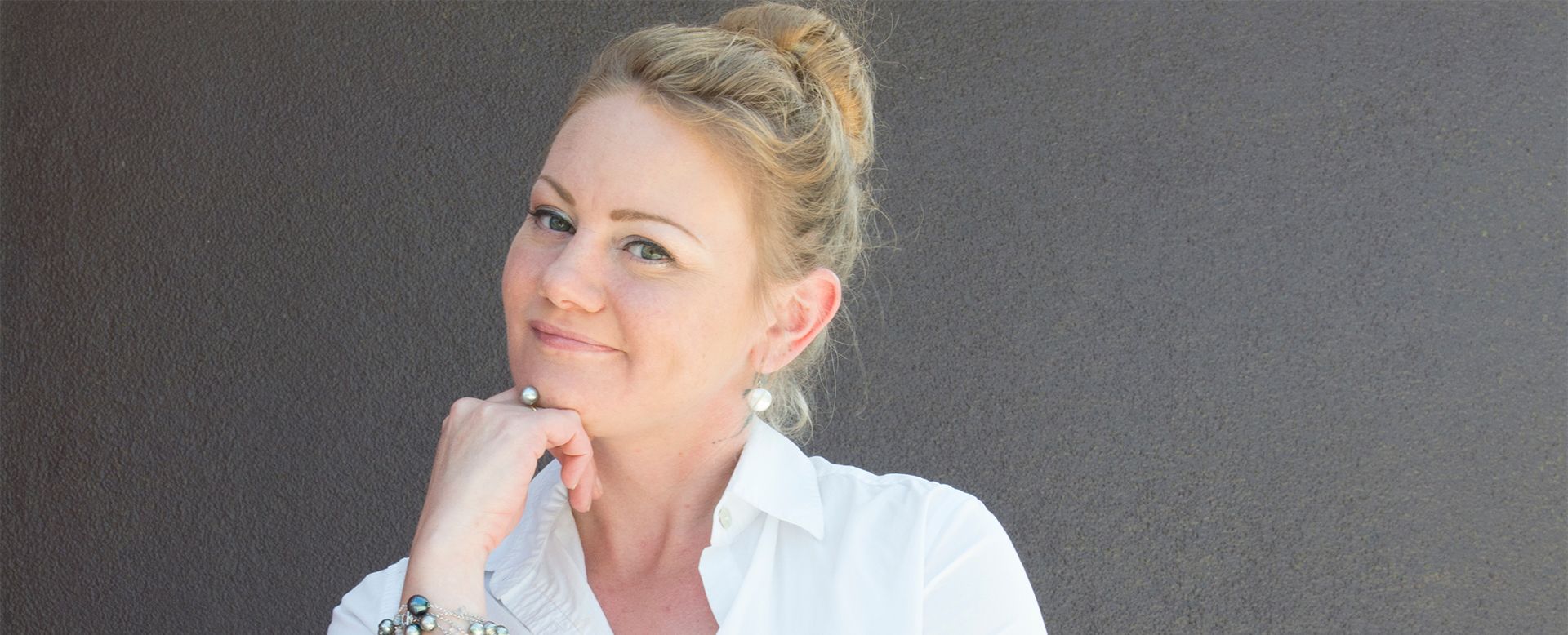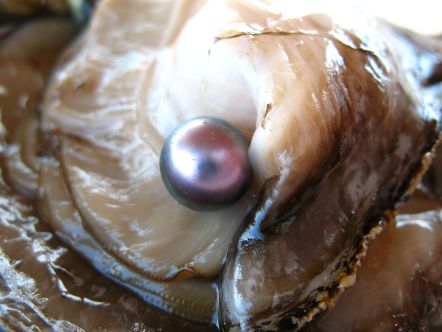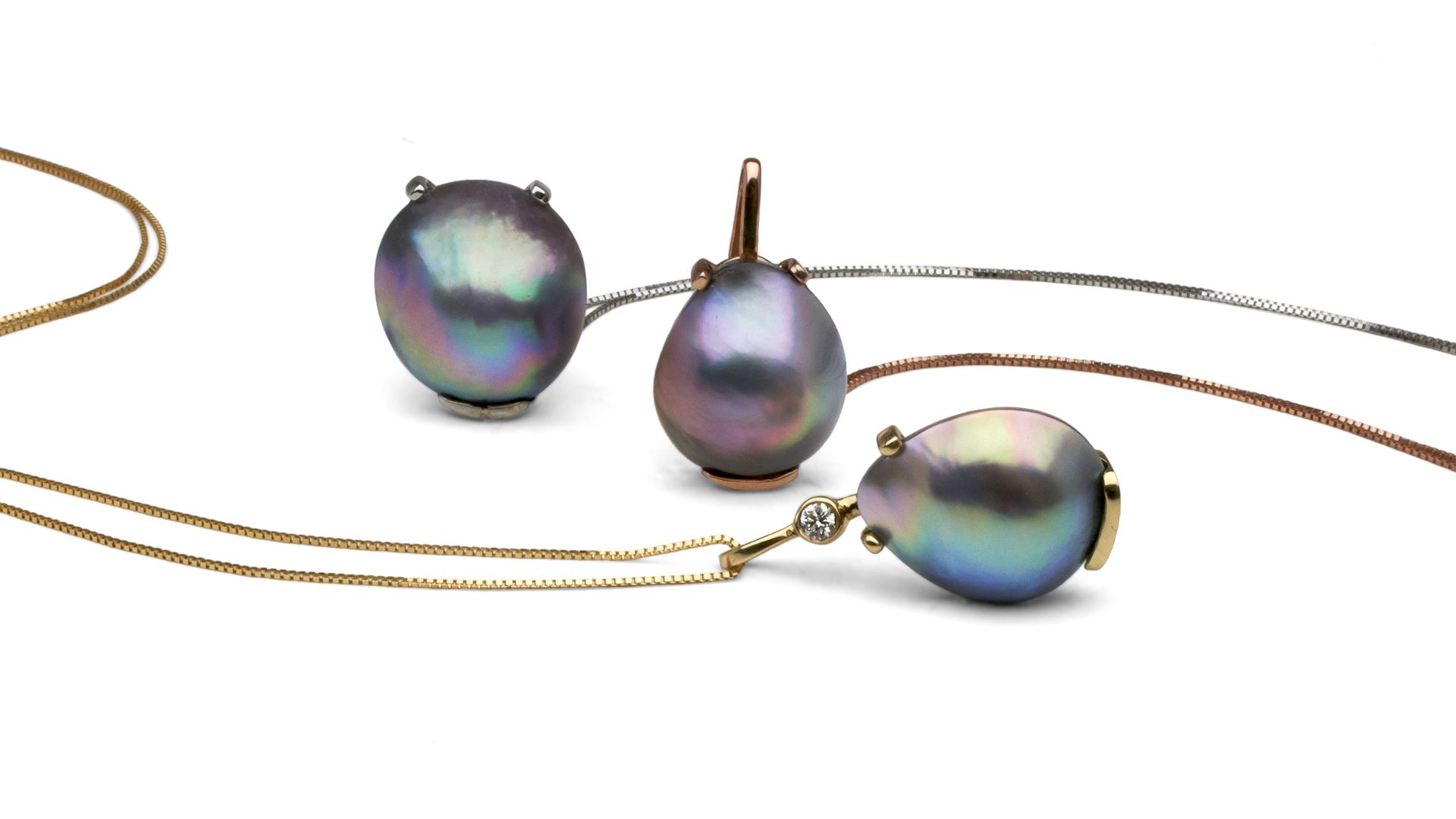It’s tempting to describe Ashley McNamara as “The Girl with the Pearl Earrings.” The CEO of the internet-based jewelry company Pure Pearls offers her customers the full range of pearl jewelry designs: bracelets, pendants, chokers, ropes, rings and earrings in styles that range from classic to cutting-edge with a spectrum of colors most people didn’t even know existed.
“Most people expect pearls to be white,” Ashley says laughing. “I love to surprise them.”
She has been in the jewelry business for 15 years and has a diploma in pearls and pearl grading from the prestigious Gemological Institute of America—the Carlsbad, California-based school that trains jewelers and appraisers. The institute also issues the definitive verdicts on the origins, color, condition and ultimate value of diamonds and colored gems.
“When I first started looking at pearls, I was captivated by their mystery,” she recalls. “They have a glow—an inner quiet appeal that other stones didn’t have. The finest examples look like milk glass.”
Ashley is not alone in her fascination. Other jewelry styles may go in and out of fashion upon a whim, but pearls are considered perpetually, perennially elegant. They are the favorite gems of some of the world’s most gifted jewelers and a favorite symbol of wealth and authority for royalty from Queen Elizabeth I to Kate Middleton, female politicians around the world, and American first ladies from both political parties.
Pearls are closely associated with fashion icons like Coco Chanel, Audrey Hepburn, Sarah Jessica Parker, Gwyneth Paltrow and designer Carolina Herrera, who is rarely seen without her signature pearls. Young celebrities and fashionistas like Selena Gomez, Rihanna and even Lady Gaga keep pearls relevant by wearing them with edgy, avant-garde fashions. The most versatile of all gems, pearls are just as cool and stylish with jeans and a T-shirt as they are with haute couture.
Her passion for pearls allows Ashley to focus exclusively upon the protean gem—and in doing so, offer her clients a breathtaking range of pearl varieties, shapes and colors. Even clients who want “white” pearls are in for an education.

“Within the realm of white pearls, there is a whole rainbow of tints and overtones,” Ashley explains. “There’s cream white—a soft, candlelight color, and silver white—a very pure, icy white. Rose white has deep pink iridescence. Some whites will have a blue tint or lavender or green. There is a shade or color that will flatter every complexion; you just have to compare a few examples and see which version of ‘white’ is best for you.”
The entire pearl realm is represented at Pure Pearls: the traditional and highly sought-after Japanese akoya pearl—the perfectly round, cultured pearl that sets the industry standard; baroque pears—the charmingly idiosyncratic, irregularly shaped, one-of-a-kind pearls that are highly prized by artistic designers; freshwater—the up-and-coming Chinese pearls that now rival akoyas for beauty and luster; and the ultra-luxurious South Sea pearls—the huge, rare and exclusive gems that are farmed in the crystalline lagoons of Australia, Indonesia and French Polynesia.
“South Sea pearls are really the gem quality pearls,” says Ashley. “Their size can easily be 12, 13, 14 millimeters or more, and they are so regal, commanding. Their luster is so rich; they definitely make a ‘power’ statement.”
Ashley notes that white South Sea pearls come from Australia, and black pearls are known as “Tahitians” because they are cultivated in the protected lagoons of the Tahitian islands. Next to tourism, the pearl trade is Tahiti’s biggest industry.
Golden South Sea pearls come from Indonesia and the Philippines. Golden pearls are among the least known and most misunderstood varieties of pearls—ranging in color from a pale, delicate champagne shade to a deep, almost orange hue.

“The trick is finding a shade of yellow that works with your individual coloring,” says Ashley. “I’m a pale blonde, so the deeper, more intense shades don’t work so well on me. I prefer the more subtle, pastel shades. Women with darker complexions are drawn to the richer, more exotic tones.”
Tahitian pearls can also require some explanation for new customers, and Ashley and her staff are delighted to share their expertise and education with clients about the subtle nuances of pearls.
“Tahitian pearls are becoming very popular,” says Ashley. “Tiffany began promoting them back in the ‘70s. People are intrigued by the palette they present. They expect them to be just solid black, but when they see the pearls in person, they are fascinated by the many shades of charcoal, silver and peacock, with purple or rose overtones. They have nuance and a subtle iridescence. Tahitians are the edgier, more sophisticated side of pearls.”
Ashley is excited about new, nontraditional sources for cultured pearls. For decades, freshwater pearls from China were the sad stepchildren of the pearl industry. These pearls, produced by mussels in inland lakes and rivers, were of poor quality with low luster, thin nacre and dull surface.
In recent years, Chinese pearl farmers have made a quantum improvement in the quality of their pearl harvest, producing specimens that rival akoyas in smoothness, luster and radiance. In addition, because they are produced in greater abundance (oysters typically produce one akoya or South Sea pearl at a time; freshwater mollusks can produce multiple hems at once), their prices are more affordable—typically half the price of akoya pearls.
Chinese pearl farmers have also perfected techniques for producing exceptional color and radiance: shades of peach, pink, lavender and purple, and “metallic” pearls—gems with an otherworldly luster that resembles enamel. These colors are all natural and untreated; they won’t fade over time like cheap, dyed pearls. These new freshwater pearls are very fashion-forward and popular with designers and clients with an adventurous sense of fashion.
“The future of pearls is in China—the price points, the volume, the bizarre shapes, the metallic luster,” says Ashley. “Now that their nucleation techniques have caught up with the Japanese, they are producing perfectly round, lustrous, elegant gems, not the dull, pitted, flawed pearls that used to be typical of freshwater pearls.”
Ashley travels to Hong Kong for the industry’s biggest, most prestigious pearl auctions and attends gem markets in Las Vegas. She even makes occasional trips to the source, visiting pearl farms in Australia and Tahiti.
“Most jewelry stores, in the mall or on Main Street, sell a wide variety of products,” says Ashley. “They will carry colored stone jewelry and do most of their business in watches and engagement rings. They will have maybe one case dedicated to pearls and probably sell one or two necklaces a month, so they don’t buy large quantities of pearls at wholesale. Even big department stores like Bloomingdale’s and Neiman Marcus don’t carry the volume and variety of pearls available at Pure Pearls. Because I buy in such huge quantities, I am able to secure great wholesale prices and pass the savings on to my clients.”

Ashley examines thousands and thousands of pearls a year—sorting, grading, pairing and then making them into necklaces. “My favorite days are when we get in big lots of pearls in plastic bags and get to go through them,” she says. “Each pearl has its own character. I love playing with them and imagining the possibilities.”
Ashley routinely sees some of the finest pearls in the world every day, but even she was astonished when pearl farmer Doug McLaurin introduced her to his Sea of Cortez pearls. Farmed in the pristine waters of Baja California, Sea of Cortez pearls are produced in maddeningly small quantities: only a few thousand pearls each year (as opposed to the hundreds of thousands of pearls produced by Japanese akoya farms and the missions of freshwater pearls produced in China) in deep, haunting shades of iridescent blue, magenta, teal and purple.
“They are the rarest pearls in the world,” says Ashley. “They are the most colorful and have the most incredible luster.”
They also have a rich and intriguing history. “Central and South America were once the center of the world pearl trade,” Ashley explains. “They were part of the treasures the Spanish and Portuguese brought back from the New World. Eventually those oyster beds, which produced ‘natural’ pearls, were fished out, and production shifted to Asia and became almost exclusively Asian when Kokichi Mikimoto perfected the process of culturing pearls.”
Ashley uses the Sea of Cortez pearls in single-pearl pendants because of the limited availability of the pearls. “I had to work with a goldsmith to design a setting to hold a baroque or mabe pearl because of their irregular shape,” says Ashley. “We created an open setting that allows the pearl to stand out and be seen all on its own.”
The revival of the pearl industry in the Gulf of California represents more than an exciting development for the jewelry industry, but also a shift in consciousness with regard to the health of the world’s oceans.
“Oysters are filter feeders,” Ashley explains. “They collect nutrients by filtering gallons of water through their systems. They are delicate animals—they thrive where there is low pollution, no red tides, the proper PH balance. Everything must be in harmony. The health of the world’s pearl beds is a barometer of the health of the world’s oceans. No other industry is as dependent upon the health of the environment as pearl farming.”
While strict vegans might disagree, Ashley McNamara insists that pearl farming is ultimately healthy for oysters as well as the ocean. “We work hard to prolong the life of the oysters,” she says. “We keep them clean of parasites and healthy, and allow the strongest and healthiest specimens to reproduce. There is no waste in the pearl industry. The shells get recycled, and the mother-of-pearl lining gets used for buttons and decorative inlay. The meat is sold for pet food. There are no toxic dumps. Pearls are the greenest gems. They are the only sustainably produced gems in the world.”

Ashley McNamara discovered Sea of Cortez pearls on pearl-guide.com, an online forum for jewelry professionals. Doug had posted photos of his harvest, and Ashley was instantly intrigued.
“It was love at first sight!” she laughs. “It became my mission to meet him and get my hands on his stunning pearls.”
They later met at an industry function and began making plans to collaborate. In 2014, they launched the Pure Pearls Sea of Cortez collection. It was an immediate success with Ashley’s clients.
Doug has no background in jewelry. “I never really cared for gems or metals,” he says. “I am a biologist/ecologist by training and passion.”
The son of a cattle rancher, Doug traded pastures for the oceans. He has a bachelor’s degree in biochemistry and marine sciences and a master’s in sustainable development and aquaculture. He has been researching pearls for 24 years. The rainbow-lipped oysters he farms are unique and not found anywhere else in the world.
“I believe in a higher principle known as ‘tikkun olam,’” he explains. “For me, it means ‘to heal the world.’ Everything I care to do in life has to be able to relate to this healing of the world. The pearl oysters in the Sea of Cortez were overfished and populations on the verge of extinction, and by growing them in a special farming operation, we believe we have been able to help them make a comeback or experience a recovery.”
Doug is devoted to culturing magnificent pearls and to nurturing the health of the world’s oceans. For him, the two are inextricably linked.
“Pearls are the way that nature creates art,” he says. “Shells are art, bones are art … and, of course, pearls are art. When we help oysters produce beautiful art, we are coworkers in the creation of beauty, and this, to me, is also the essence of tikkun olam. Beauty heals.”
Written by Lynn Morgan































